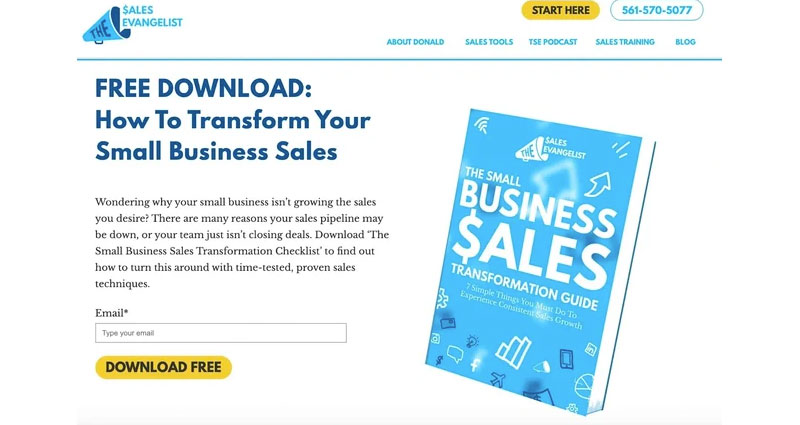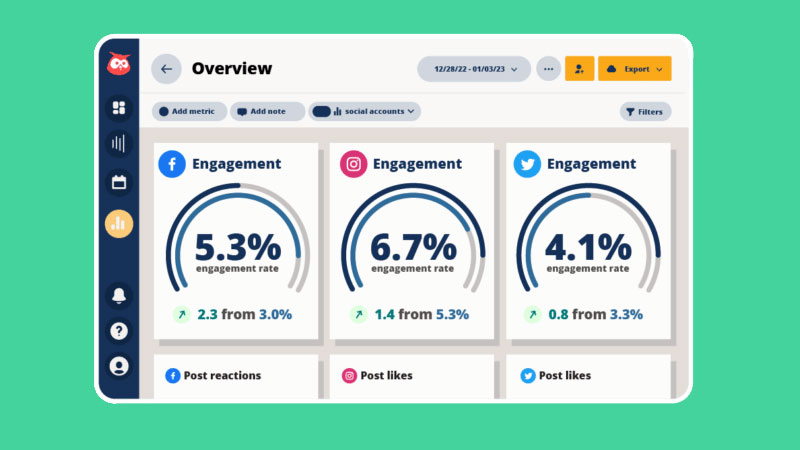The digital marketing world isn’t a place for the faint-hearted—it’s a battleground where only the well-armed thrive.
Meet the ultimate arsenal: content marketing OKRs. These are more than buzzwords; they’re the strategic compass steering your efforts towards measurable success.
In this labyrinth of marketing metrics, OKRs stand out by providing clear objectives and defining key results.
They bring order to the chaos, turning vague ambitions into concrete targets. Content strategy and performance indicators align under one roof, shifting the focus to what truly matters.
You’ll discover why performance metrics, SMART goals, and a robust content marketing framework are non-negotiable. I’ll walk you through the nuts and bolts of setting, tracking, and smashing those OKRs.
By the end, you’ll master the art of creating measurable marketing goals that elevate your strategy and guarantee results.
What Are Content Marketing OKRs?
Content Marketing OKRs (Objectives and Key Results) are specific goals and measurable outcomes used to align and track the performance of content marketing efforts, focusing on increasing brand awareness, engagement, lead generation, and conversions. They help ensure strategic alignment and accountability in content initiatives.
Types Of Content Marketing OKRs
| Objective | Key Result 1 | Key Result 2 | Target Metrics | Timeline | Responsible Team |
|---|---|---|---|---|---|
| Increase Website Traffic | Publish 20 new blog posts | Optimize existing content for SEO | 50% increase in organic traffic | Q3 2024 | Content Team |
| Boost Engagement | Increase average session duration to 5 minutes | Increase comments and shares by 30% | 20% increase in average session time | Q3 2024 | Social Media Team |
| Improve Lead Generation | Develop and promote 5 lead magnets | Host 3 webinars | 15% increase in qualified leads | Q4 2024 | Marketing Team |
| Enhance Brand Awareness | Collaborate with 10 influencers | Publish 5 guest posts on industry blogs | 25% increase in brand mentions | Q4 2024 | PR Team |
| Increase Email Subscribers | Launch a monthly newsletter | Implement 3 new email sign-up incentives | 20% growth in subscriber list | Q3 2024 | Email Marketing Team |
Setting Effective Content Marketing Goals
Importance of Clear Goals
Aligning with business objectives is the first step towards effective content marketing.
Without a clear alignment, content can drift, lose focus, and fail to support the overarching goals of the business.
Imagine launching content without a target, akin to setting sail without a destination.
Every piece of content should serve a purpose, whether it’s supporting new product launches, enhancing brand awareness, or driving SEO and web traffic.
This alignment ensures that the content marketing strategy is not only coherent but also integral to the broader business strategy.
Measuring success comes next. Without clear, measurable goals, it’s impossible to gauge the effectiveness of your content marketing efforts.
Metrics are your best friend here. They help you understand what works, what doesn’t, and where to pivot.
Key performance indicators (KPIs) like engagement rates, lead generation, and conversion rates are essential. These metrics transform abstract goals into concrete data, providing a clear picture of your progress and success.
Types of Content Marketing Goals
Content Creation
Content creation is at the heart of any content marketing strategy.
It’s not just about churning out blog posts; it’s about supporting new product launches and improving content quality.
Goals in this category often include crafting engaging blog posts, creating compelling infographics, or developing comprehensive whitepapers.
These pieces should resonate with your audience, providing value and encouraging engagement.
SEO and Web Traffic
SEO and web traffic goals focus on optimizing for specific search terms and increasing organic search traffic.
The aim is to climb the ranks of Google SERPs, driving more visitors to your site.
Publishing long-form, keyword-focused content and regularly monitoring your SEO strategies are key actions here.
Tools like Google Analytics, SEMrush, and Ahrefs become indispensable, helping you track progress and adjust your tactics as needed.
Social Media Engagement
Social media engagement is about more than just likes and shares. Growing social media followers and increasing engagement rates are crucial objectives.
This means developing content that not only grabs attention but also encourages interaction.
Think of developing engaging content formats like videos or interactive posts.
Utilize employee advocacy to broaden your reach, and always keep a finger on the pulse of your social media strategies to ensure they remain effective.
Lead Generation
Lead generation is a pivotal goal for any content marketing strategy.
It’s about boosting inbound leads and enhancing their quality.
Implementing gated content strategies and developing targeted email campaigns are effective ways to achieve this.
Conversion rates can be increased through optimized content, and lead scoring mechanisms can help prioritize and nurture the most promising leads.
Brand Awareness
Building brand awareness is about establishing your brand as a thought leader and increasing overall visibility.
This can be achieved by publishing industry-related content, engaging in co-marketing opportunities, and optimizing webinars and other interactive content.
Enhancing your presence across multiple platforms ensures that your brand stays top-of-mind for your audience.
Content Creation Goals and OKRs
Objectives for Content Creation
Support new product launches.
Think of it as the grand unveiling. The spotlight. Your content needs to scream excitement, urgency, and value.
A new product is a story waiting to be told. It’s the hero’s journey, and your content should capture that essence.
From blog posts to video content, each piece should align with the launch, offering insights, benefits, and compelling narratives.
Improve content quality.
Quality over quantity, always. No more fluff. It’s about depth, relevance, and engagement.
High-quality content is what makes people stay, read, and share. It’s about providing real value—think comprehensive guides, well-researched articles, and visually appealing infographics.
This isn’t just about filling up space; it’s about making each word count.
Key Results for Content Creation
Launch a content strategy.
You can’t just wing it. A well-thought-out content strategy is crucial.
This means planning out what content to create, when to publish it, and how it ties into the overall marketing goals. Each piece should have a purpose, whether it’s to inform, entertain, or convert.
This strategy should be dynamic, evolving with feedback and performance data. Tools like Google Analytics and editorial calendars are your best friends here.
If you want help with that, we can do it for you. With us, you’ll get results like these.
Write and publish a specific number of blog posts.
Numbers matter. Set clear, measurable targets—like publishing four in-depth blog posts per week. These posts should not only be frequent but also insightful and engaging.
Cover topics that align with your audience’s interests and the company’s goals.
Think blog posts that support your SEO efforts by targeting specific search terms and incorporating long-tail keywords.
Increase blog subscribers and engagement.

Subscribers are gold. They’re your loyal audience. Focus on growing this list. Offer incentives like exclusive content or downloadable resources.
Engagement, on the other hand, is about fostering a community.
Encourage comments, discussions, and shares. Utilize social media platforms to promote your blog posts, driving traffic and interaction.
Collaborate with industry influencers.
Tap into the power of influencers. They bring credibility and a broader audience.
Find influencers who resonate with your brand’s voice and values. Collaborate on content pieces, whether it’s guest posts, co-authored articles, or joint webinars.
This not only enhances your content but also extends your reach. Partnering with recognized names can significantly boost your brand’s authority and trustworthiness.
SEO and Web Traffic Goals and OKRs
Objectives for SEO and Web Traffic
Optimize for specific search terms.
It’s all about precision. Think of search terms as keys to unlocking the doors of visibility.
We need to get inside the heads of our audience—what are they searching for?
Using tools like SEMrush, Ahrefs, and Moz, we can identify those golden keywords that align with our content.
Increase organic search traffic.
This isn’t just a numbers game; it’s about quality. The more organic traffic, the better, right?
But it’s not just about any traffic—it’s about attracting the right visitors.
People who find us through organic search are looking for something specific.
They’re engaged. They’re interested. And they’re more likely to convert. Our content needs to rank high and be enticing enough to click.
Key Results for SEO and Web Traffic
Achieve higher rankings in Google SERPs.
Page one or bust. The goal here is to climb the search engine results pages (SERPs). Higher rankings mean more visibility, more clicks, more everything.
This requires consistent optimization—title tags, meta descriptions, alt text. Every detail matters. The competition is fierce, but with strategic SEO, we can outshine them.
Google Analytics becomes our guiding star, showing us what works and what doesn’t.
Increase inbound links.

Think of inbound links as votes of confidence.
Other sites linking to our content boosts our authority. It’s not just about quantity but quality.
High-authority sites linking back to us are gold. Strategies include guest blogging, creating shareable infographics, and fostering relationships with industry influencers.
Each inbound link is a step up the SEO ladder.
Publish long-form, keyword-focused content.
Depth over brevity. Long-form content (think 2,000+ words) dives deep into topics, offering real value.
This isn’t just about filling space; it’s about thorough, engaging, and keyword-rich content. It’s what search engines love and what readers devour.
Incorporating keywords naturally, the content should educate, entertain, and answer questions comprehensively.
Regularly monitor and adjust SEO strategies.

SEO is not a set-it-and-forget-it task. It’s a living, breathing entity that needs constant attention. Regular audits, updates, and tweaks are essential.
Using tools like Google Search Console, we can track performance, identify issues, and pivot when necessary. Trends change, algorithms update, and so must our strategies.
Social Media Engagement Goals and OKRs
Objectives for Social Media Engagement
Grow social media followers.
It’s not just about numbers, but a growing follower base means a wider reach. More people means more potential customers, more interactions, more opportunities.
Think of it as planting seeds—every new follower has the potential to grow into a loyal advocate.
Targeted campaigns, collaborations with influencers, and consistent, high-quality content are key.
Increase engagement rates.

Likes, shares, comments—these aren’t just vanity metrics. They’re signs of life, signals that our content is resonating. Engagement is about creating a conversation, a community.
It’s about making sure our content is not only seen but interacted with. This means being responsive, being present, and always pushing for interaction.
Key Results for Social Media Engagement
Increase frequency of social media posts.
Consistency is queen. More posts mean more opportunities to connect. It’s a balancing act, though—quantity should never sacrifice quality.
We need to post regularly, but each post must be a gem. Plan an editorial calendar, use tools like Buffer or Hootsuite, and ensure every post serves a purpose.
Develop engaging content formats.
Static images are great, but variety is the spice of life.
Video content, interactive posts, stories—each format has its place. Experimentation is key.
Find what resonates with the audience and run with it. Think behind-the-scenes looks, live Q&A sessions, polls. Mix it up and keep it fresh.
Use employee advocacy for broader reach.
Your team can be your best advocates. Encourage employees to share content, to engage, to spread the word. It’s organic, it’s authentic.
Employee advocacy tools can help streamline this process, making it easy for everyone to get involved. This isn’t just about reach; it’s about trust and credibility.
Monitor and optimize social media strategies.
Always be tuning. Social media is dynamic; what works today might not work tomorrow. Regularly analyze performance metrics, adjust tactics, and stay agile.
Use analytics tools to track what’s working and what’s not. Pivot when necessary, double down on success. It’s a game of constant adjustment and relentless improvement.
Lead Generation Goals and OKRs
Objectives for Lead Generation
Boost inbound leads.
Think of it as fishing with a net instead of a line. We need more leads coming to us—qualified, interested, ready to engage.
It’s about creating magnetic content, optimizing our funnels, and using every channel at our disposal.
Blog posts, social media, email marketing, SEO—they all play a part. More leads mean more opportunities to convert.
Enhance lead quality.
Quantity is nothing without quality. It’s about attracting the right people, those who are truly interested in what we offer.
High-quality leads are more likely to convert, less likely to churn. It’s about understanding our audience, their pain points, and crafting messages that resonate.
Detailed customer personas help here, giving us a clear picture of who we’re targeting.
Key Results for Lead Generation
Implement gated content strategies.
This is where we give a little to get a lot. Offering valuable content—whitepapers, e-books, exclusive webinars—in exchange for contact information.
It’s a win-win. They get something of value, we get a lead.
This strategy builds our list with people who are already interested in what we have to offer. It’s targeted, effective, and builds a foundation for deeper engagement.
Develop targeted email campaigns.
Email isn’t dead. Far from it. It’s still one of the most effective ways to nurture leads. But it’s not about blasting generic messages.
We need personalized, targeted campaigns that speak directly to our audience’s needs. Segmentation is key.
Use insights from tools like HubSpot or Mailchimp to tailor our messages, creating a journey that guides leads towards conversion.
Increase conversion rates through optimized content.
Every piece of content should have a purpose—to convert. Whether it’s a landing page, a blog post, or a social media ad, optimization is crucial.
This means clear calls-to-action, compelling copy, and a user experience that makes it easy to take the next step.
Testing and tweaking are part of the process, using A/B tests and analytics to refine our approach.
Use lead scoring mechanisms.
Not all leads are created equal. Lead scoring helps us prioritize, focusing our efforts on those most likely to convert.
By assigning scores based on behavior, engagement, and demographics, we can tailor our approach.
High-scoring leads get more personalized attention, ensuring we maximize our chances of conversion. Tools like Salesforce or Zoho CRM make this process seamless.
Brand Awareness Goals and OKRs
Objectives for Brand Awareness
Establish the brand as a thought leader.
It’s all about positioning. We need to be the go-to source, the expert, the voice that cuts through the noise. Thought leadership isn’t just a title—it’s earned.
It means consistently delivering high-value content that educates, inspires, and sets trends.
Think insightful blog posts, comprehensive whitepapers, and engaging video content. The goal is to build trust, credibility, and authority.
Increase overall brand visibility.
Visibility is more than just being seen; it’s being remembered.
Our brand needs to be everywhere our audience is, from social media platforms to industry events. It’s about creating a strong, recognizable presence that stands out.
This involves a mix of organic and paid strategies, from SEO to influencer partnerships, ensuring our brand is top of mind.
Key Results for Brand Awareness
Publish industry-related content.
Content is king, but context is queen.
We need to publish articles, case studies, and reports that speak directly to our industry’s audience.
This isn’t just about quantity; it’s about relevance and depth. By addressing current trends, challenges, and innovations, we position ourselves as the experts.
Tools like SEMrush and Ahrefs help identify trending topics, ensuring our content is timely and impactful.
Engage in co-marketing opportunities.
Collaboration can amplify our reach. Partnering with other brands, especially those that complement ours, can open doors to new audiences.
Co-branded webinars, joint social media campaigns, and guest blogging are just a few ways to leverage these opportunities.
It’s a symbiotic relationship—mutually beneficial and far-reaching.
Optimize webinars and other interactive content.
Webinars are gold mines for engagement and lead generation.
They offer a platform to showcase expertise and interact with the audience in real-time.
But it’s not just about hosting webinars; it’s about optimizing them.
This means promoting them effectively, delivering high-value content, and following up with attendees.
Interactive content, like polls and Q&A sessions, boosts engagement and keeps the audience invested.
Enhance presence across multiple platforms.
Being a one-platform wonder isn’t enough. We need a strong, cohesive presence across all relevant platforms—Facebook, LinkedIn, Instagram, Twitter, and beyond.
Each platform has its unique audience and style, and our content should reflect that.
Consistency in branding and messaging is key, but so is adapting to the nuances of each platform. Tools like Hootsuite can streamline this process, ensuring we’re always active and engaging.
Strategies for Implementing and Tracking OKRs
Best Practices for Setting OKRs
Align with business objectives.
This is the heartbeat of effective OKRs.
If our objectives aren’t synced with the broader business goals, we’re just spinning our wheels. Every objective must ladder up to a bigger picture.
It’s about seeing the forest, not just the trees.
When we align our content marketing okrs with overarching business goals, we create synergy. The content isn’t just noise; it’s a strategic weapon.
Make objectives specific and measurable.
Vague goals are the enemy. “Improve website traffic” isn’t good enough. “Increase organic traffic by 20% in Q3 through SEO optimization and targeted blog posts” — now we’re talking.
Specificity gives us a clear target, and measurability lets us know if we’re hitting the mark. It’s about clarity and precision. No room for ambiguity.
Tracking and Reviewing OKRs
Weekly check-ins and progress reviews.
Regular check-ins keep the momentum going. They’re our pulse checks. Are we on track? Do we need to pivot? These meetings should be concise but thorough.
Review what’s working, what’s not, and adjust on the fly. It’s about staying agile. Weekly progress reviews help maintain focus and keep everyone accountable.
Adjusting strategies based on performance data.
Data doesn’t lie.
It tells us what’s working and what’s falling flat. Regular analysis of performance data is crucial. It’s not enough to set it and forget it.
We need to be nimble, ready to tweak our strategies based on what the data shows.
Maybe a particular piece of content is underperforming, or perhaps an unexpected topic is driving traffic. Be ready to shift gears.
Tools and software for OKR management.
| Tool Name | Features |
|---|---|
| WorkBoard | OKR alignment, real-time dashboards, insights and analytics |
| BetterWorks | Goal setting, performance management, continuous feedback |
| Perdoo | OKR setting, performance tracking, goal visualization |
| Gtmhub | OKR alignment, data-driven insights, integrations with other tools |
| Lattice | OKR and goal tracking, performance reviews, employee engagement surveys |
| Ally.io | OKR management, strategic alignment, real-time progress tracking |
| Weekdone | OKR tracking, weekly check-ins, progress reports |
| Koan | OKR setting, status updates, feedback loops |
| Profit.co | OKR setting, performance management, task management |
FAQ On Content Marketing OKRs
Why are OKRs important for content marketing?
OKRs bring a structured approach to content marketing. They ensure all efforts are focused on achieving measurable outcomes.
By setting clear objectives and key results, you can track progress, optimize strategies, and ensure every piece of content contributes to your marketing goals.
How do you set effective OKRs for content marketing?
Start with a clear objective, such as “increase organic traffic,” then set measurable key results like “publish 10 SEO-optimized articles” or “increase inbound links by 20%.”
Make sure these key results are achievable yet challenging, aligned with your overall marketing strategy.
What are common pitfalls when setting content marketing OKRs?
Vague targets and unrealistic key results are major pitfalls. Avoid setting objectives that lack specificity or results that are unattainable.
Data-driven strategies help in defining clear, realistic OKRs. Ensure your objectives and key results are grounded in actual performance metrics.
How often should you review content marketing OKRs?
Review OKRs quarterly to ensure they’re still relevant and achievable. Regular reviews help in adjusting strategies as needed, tracking performance metrics, and ensuring alignment with your broader marketing objectives. It keeps the focus and momentum intact.
Can you give an example of a content marketing OKR?
An example would be: Objective: Improve brand visibility. Key Results: “Publish 15 high-quality blog posts,” “Increase social media engagement by 25%,” and “Achieve 10 backlinks from reputable sites.” This OKR aligns content efforts with measurable outcomes.
How do OKRs for content marketing differ from KPIs?
OKRs focus on broader objectives and the key results needed to achieve them, while KPIs are specific metrics that measure performance.
Both are essential, but OKRs provide direction, and KPIs track progress, making them complementary in measuring success.
What tools can help in tracking content marketing OKRs?
Tools like Google Analytics, SEMrush, and Ahrefs are invaluable for tracking key performance indicators and aligning them with your OKRs.
These tools offer insights into metrics like organic traffic, backlinks, and social media engagement, helping you measure your key results.
How do you align content marketing OKRs with business goals?
Aligning content marketing OKRs with business goals involves ensuring your objectives and key results directly support broader organizational strategies.
This might include driving more traffic to your site, improving lead generation, or increasing brand awareness, all of which tie into overall business success.
What is the best way to communicate content marketing OKRs to your team?
Clear communication is key. Present your OKRs in team meetings, ensure everyone understands the objectives and key results, and regularly update the team on progress.
Use collaborative tools like Trello or Asana to keep track of tasks and milestones, fostering accountability.
Conclusion
Embracing content marketing OKRs, we’ve unlocked the strategies for setting actionable objectives and key results that actually move the needle. This is more than just hitting numbers—it’s about aligning content strategy with clear business goals.
Imagine a world where every blog post, social media update, or marketing campaign isn’t just an isolated effort but a cohesive part of your broader vision. Content performance indicators and data-driven strategies make this possible, transforming abstract ambitions into tangible achievements.
Incorporating OKRs ensures your efforts aren’t just scattered attempts but focused strides towards impactful outcomes. It’s the linchpin that consolidates your marketing objectives, fuels your content strategy, and sharpen your performance metrics.
So, as we wrap up, remember that content marketing OKRs are more than a framework—they are your success blueprint. Start defining those key results, tracking performance, and steering your content ship toward measurable triumphs. With well-set OKRs, the roadmap to success isn’t just clear—it’s inevitable.





